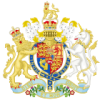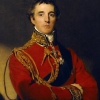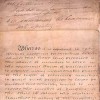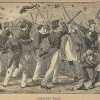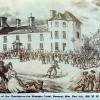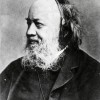Middlemarch Timeline
Created by Jessica Valdez on Mon, 01/11/2021 - 00:18
Part of Group:
Timeline of major events during the events and writing of Middlemarch.
Timeline
Chronological table
| Date | Event | Created by | Associated Places | |
|---|---|---|---|---|
| 30 Dec 1819 |
Gag Acts
Articles |
Dave Rettenmaier | ||
| 1 Apr 1829 |
Roman Catholic Relief Act
The Catholic Relief Act of 1829 allowed Catholics to become Members of Parliament and to hold public offices, but it also raised the property qualifications that allowed individuals in Ireland to vote. The passage of the Catholic Relief Act marked a shift in English political power from the House of Lords to the House of Commons. The Act was led by the Duke of Wellington and passed despite initially serious opposition from both the House of Lords and King George IV. ArticlesRelated ArticlesCarolyn Vellenga Berman, “On the Reform Act of 1832″ Sean Grass, “On the Death of the Duke of Wellington, 14 September 1852″ |
Dave Rettenmaier | ||
| 26 Jun 1830 |
Death of King George IV
Related Articles |
Dave Rettenmaier | ||
| 15 Sep 1830 |
Opening of Liverpool & Manchester Railway
Articles
|
Dave Rettenmaier | ||
| 16 Nov 1830 |
Wellington resigns as Prime Minister
ArticlesSean Grass, “On the Death of the Duke of Wellington, 14 September 1852″ |
Dave Rettenmaier | ||
| Sep 1831 to Dec 1832 |
Cholera EpidemicThe first major cholera pandemic to cross the Channel began in Sunderland in September 1831, spread throughout the country, and was not determined to be over until more than a year later, in December of 1832. Articles |
Dave Rettenmaier | ||
| 30 Oct 1831 |
Riots at BristolOn 30 October 30 1831, a crowd of 10,000 took possession of Queen Square in Bristol, as rioting in nine cities and towns marked the failure of the second version of the First Reform Bill in the House of Lords. Related Articles |
Dave Rettenmaier | ||
| Jun 1832 |
Reform Act
ArticlesCarolyn Vellenga Berman, “On the Reform Act of 1832″ Related Articles |
Dave Rettenmaier | ||
| 29 Aug 1833 |
Slavery Abolition Act
Articles |
Dave Rettenmaier | ||
| 29 Aug 1833 |
Factory Act
ArticlesRelated Articles |
Dave Rettenmaier | ||
| 9 Sep 1833 to 25 Jan 1841 |
Tracts for the Times: 1833-1841Between 1833 and 1841, members of the Oxford Movement (including John Henry Newman, John Keble, Edward Pusey, Hurrell Froude, Benjamin Harrison, and others) published 90 pamphlets in defense of Anglo-Catholic doctrine. The Tracts for the Times were vital in disseminating and consolidating the principles of the Oxford Movement, or Tractarianism as it was henceforth known. Image: This image is in the public domain in the United States. ArticlesKimberly J. Stern, "The Publication of John Pentland Mahaffy's The Decay of Modern Preaching (1882)" Related ArticlesLaura Mooneyham White, "On Pusey's Oxford Sermon on the Eucharist, 24 May 1843" Miriam Burstein, "The 'Papal Aggression' Controversy, 1850-52" Barbara Charlesworth Gelpi, "14 July 1833: John Keble's Assize Sermon, National Apostasy" |
Dave Rettenmaier | ||
| 31 Aug 1835 |
Lord Lyndhurst's Act
This Act validated all marriages voidable under the canon law’s prohibited degrees of relation (for instance, uncles forbidden to marry nieces) performed before 31 August 1835, and absolutely invalidated any performed after that date. Parliament's passage of this Act was the beginning of a protracted and heated debate over whether there should be an exception that allowed the marriage of a man to his deceased wife's sister. The controversy ended more than 70 years later with the passage of the Deceased Wife's Sister's Marriage Act in 1907. Articles
|
Dave Rettenmaier | ||
| 1 Aug 1836 |
Newspaper Act
Related ArticlesElaine Hadley, “On Opinion Politics and the Ballot Act of 1872″ |
Dave Rettenmaier | ||
| 14 Jun 1839 |
First Chartist Petition
ArticlesChris R. Vanden Bossche, "On Chartism" Related ArticlesJo Briggs, “1848 and 1851: A Reconsideration of the Historical Narrative” |
Dave Rettenmaier | ||
| Nov 1839 |
Newport Uprising
ArticlesChris R. Vanden Bossche, "On Chartism" Related ArticlesJo Briggs, “1848 and 1851: A Reconsideration of the Historical Narrative” |
Dave Rettenmaier | ||
| 2 May 1842 |
Second Chartist Petition
ArticlesChris R. Vanden Bossche, "On Chartism" Related ArticlesJo Briggs, “1848 and 1851: A Reconsideration of the Historical Narrative” |
Dave Rettenmaier | ||
| Jul 1842 |
Sanitary Condition of the Labouring Population
Related ArticlesPamela Gilbert, "On Cholera in Nineteenth-Century England" Barbara Leckie, “‘The Bitter Cry of Outcast London’ (1883): Print Exposé and Print Reprise” |
Dave Rettenmaier | ||
| 8 Aug 1842 |
Manchester strike
ArticlesChris R. Vanden Bossche, "On Chartism" Related ArticlesJo Briggs, “1848 and 1851: A Reconsideration of the Historical Narrative” |
Dave Rettenmaier | ||
| 1 Jul 1848 |
Trial of Chartist leaders
The summer of 1848 witnesses violence as Chartist leaders are arrested and secret plots against the government are infiltrated. By the end of August, after the arrest of several hundred Chartists and Irish Confederates, the movement for violent uprising in England is broken. ArticlesJo Briggs, “1848 and 1851: A Reconsideration of the Historical Narrative” |
Dave Rettenmaier | ||
| 31 Aug 1848 |
Public Health Act
ArticlesPamela Gilbert, "On Cholera in Nineteenth-Century England" Barbara Leckie, “‘The Bitter Cry of Outcast London’ (1883): Print Exposé and Print Reprise” |
Dave Rettenmaier | ||
| Oct 1848 to Dec 1849 |
Cholera EpidemicThe second major cholera epidemic in the UK began in Scotland in October 1848 and is generally agreed to have largely subsided in the UK by the end of 1849. Articles |
Dave Rettenmaier | ||
| Aug 1853 to Nov 1854 |
Cholera EpidemicThe third major cholera epidemic in the UK began in August 1853 and extended through November 1854. It is during this epidemic that John Snow deduced the mode of transmission, by water contaminated with feces. Articles |
Dave Rettenmaier | ||
| 15 Jun 1855 |
Stamp Act
Related ArticlesElaine Hadley, “On Opinion Politics and the Ballot Act of 1872″ |
Dave Rettenmaier | ||
| 25 Aug 1862 |
Victoria Station openedOn 25 August 1862, London Victoria Station was opened, connecting London to the Kent coast. Related ArticlesPaul Fyfe, “On the Opening of the Liverpool and Manchester Railway, 1830″ Nancy Rose Marshall, “On William Powell Frith’s Railway Station, April 1862″ |
Dave Rettenmaier | ||
| Nov 1865 to Nov 1866 |
Cholera EpidemicThe last cholera epidemic is conventionally termed “of 1866” as that was the period of the highest mortality. The epidemic arrived in Britain in September 1865 and ended in November 1866. Articles |
Dave Rettenmaier | ||
| 15 Aug 1867 |
Second Reform Act
ArticlesJanice Carlisle, "On the Second Reform Act, 1867" Related ArticlesCarolyn Vellenga Berman, “On the Reform Act of 1832″ Elaine Hadley, “On Opinion Politics and the Ballot Act of 1872″ |
Dave Rettenmaier | ||
| 9 Aug 1870 |
1870 Married Women's Property Act
This Act established limited protections for some separate property for married women, including the right to retain up to £200 of any earning or inheritance. Before this all of a woman's property owned before her marriage, as well as all acquired after the marriage, automatically became her husband's alone. Only women whose families negotiated different terms in a marriage contract were able to retain control of some portion of their property. ArticlesRachel Ablow, "On the Married Woman's Property Act, 1870" Related ArticlesKelly Hager, “Chipping Away at Coverture: The Matrimonial Causes Act of 1857″ Jill Rappoport, “Wives and Sons: Coverture, Primogeniture, and Married Women’s Property” Anne Wallace, “On the Deceased Wife’s Sister Controversy, 1835-1907″ |
Dave Rettenmaier | ||
| 1871 to 1872 |
George Eliot Published Middlemarch George Eliot's Middlemarch: A Study in Provincial Life published in 8 installments, 1871-72.
Articles |
Dave Rettenmaier | ||
| 18 Jul 1872 |
Ballot Act
ArticlesElaine Hadley, “On Opinion Politics and the Ballot Act of 1872″ Related Articles |
Dave Rettenmaier |

